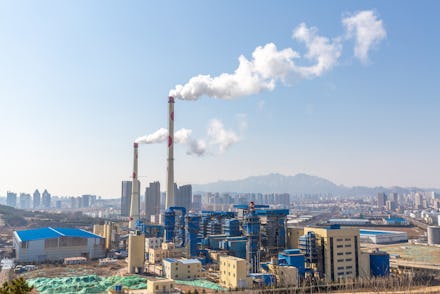Emissions are already almost back at pre-pandemic levels

When much of the world went into lockdown due to the coronavirus pandemic earlier this year, greenhouse gas emissions plummeted. Now as states and countries drop restrictions that kept their populations in isolation, the latest research shows emissions are once again on the rise and pushing toward pre-pandemic levels.
Last month, a study published in Nature Climate Change found the planet experienced as much as a 17 percent decline in daily global emissions during April, when many countries were still in the midst of lockdowns meant to help slow the spread of coronavirus. With restrictions lifting and people once again moving around freely, daily global emissions have already returned to within just five percent of the 2019 average, according to researchers at the Integrated Carbon Observation System (ICOS). Some countries, like China, have already seen carbon emission levels return to where they were prior to the pandemic.
Much of this increase was inevitable. The drops in emissions were caused by a dramatic intervention, but not one that was designed to last. But the rate at which the emissions are rebounding is a bit surprising. Experts previously predicted that the coronavirus-related drop in emissions could result in an overall decline of between four and eight percent for the year, which would have been unprecedented. That would have put the world nearly on pace for the decline required to avoid the worst outcomes of climate change, according to the United Nation's annual Emissions Gap report. If emissions continue to rebound faster than expected, it's unlikely that the planet will benefit from that reduction.
One of the biggest drivers of the emissions increase is the return of vehicles on the road. At the peak of the lockdown efforts, as many as half of all standard vehicle traffic was eliminated. With many businesses, parks, and other attractions closed, people had fewer places to go and chose to remain home. Now that cities, states, and entire countries are opening back up, people are moving again. While some initiatives like work from home remain in place and may manage to keep down some emissions, there is some evidence to suggest that people are avoiding public transportation and may be countering any improvements in emissions by putting more cars on the road or relying on ride-shares and other services that burn fuel.
Another factor in the uptick of emissions may have to do with the start of summer. Much of lockdown happened during spring, when air conditioning isn't necessary in much of the country. As the days get longer and hotter, air conditioning use is likely on the rise and driving a spike in electricity-related emissions.
What is particularly troubling about the increase in emissions is the fact that coronavirus does not appear to be contained. Cases continue to rise in some regions across the United States, with nine states hitting record highs on Wednesday. A sudden spike in cases also occurred in China this week, spurring the country to shut down the biggest wholesale food market in Beijing after discovering 53 new infections. If the drop in global emissions seemed like a silver lining to the pandemic, that appears to be nearly gone, too. A second shutdown might be required for both problems, but it’s unlikely that many will have the stomach for it. It seems we’ll deal with coronavirus the same way we’ve dealt with climate change for years: pretend there’s nothing we can do about it.